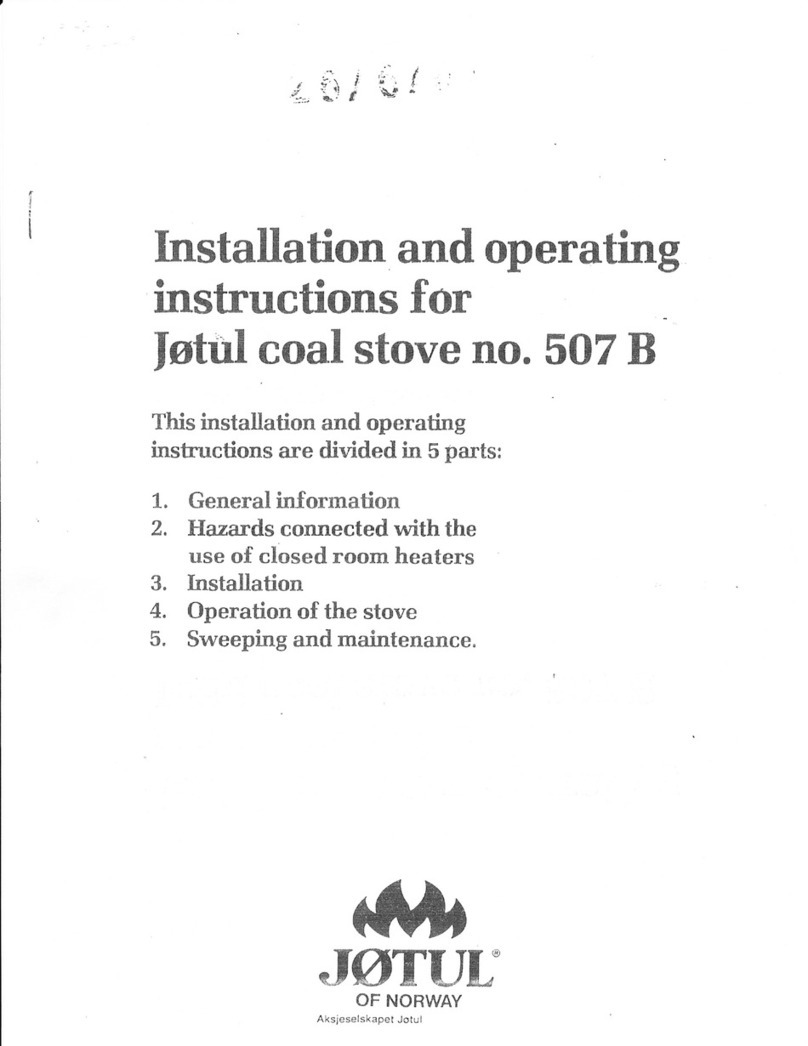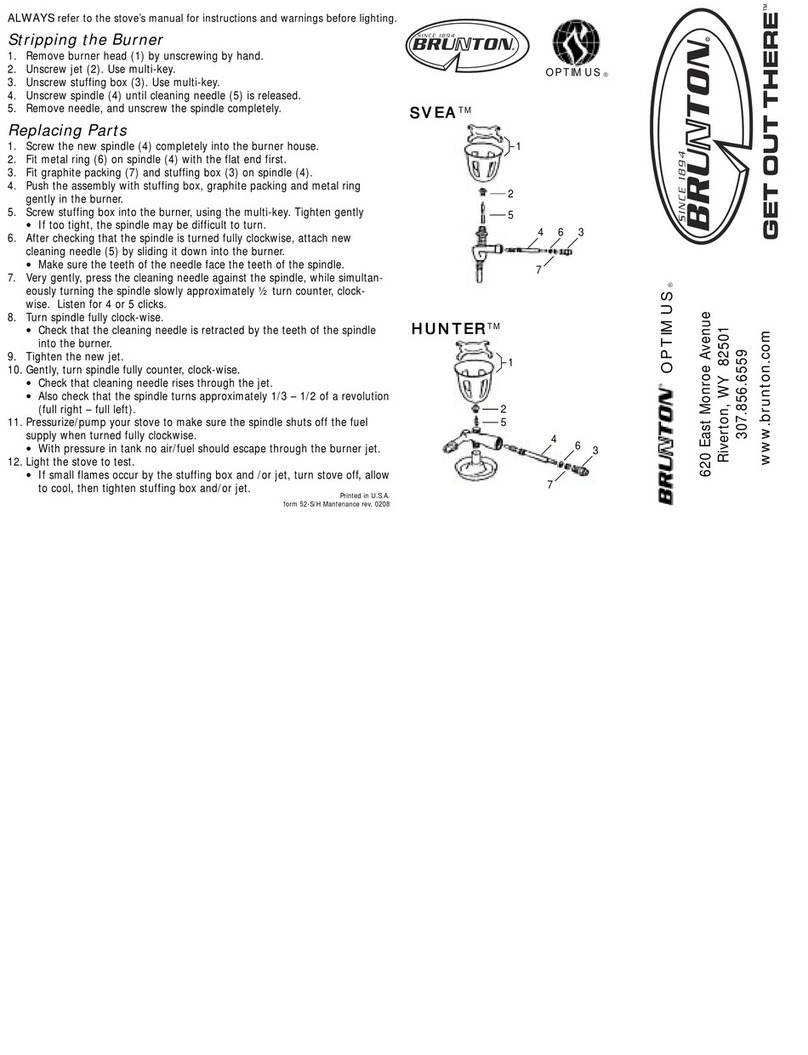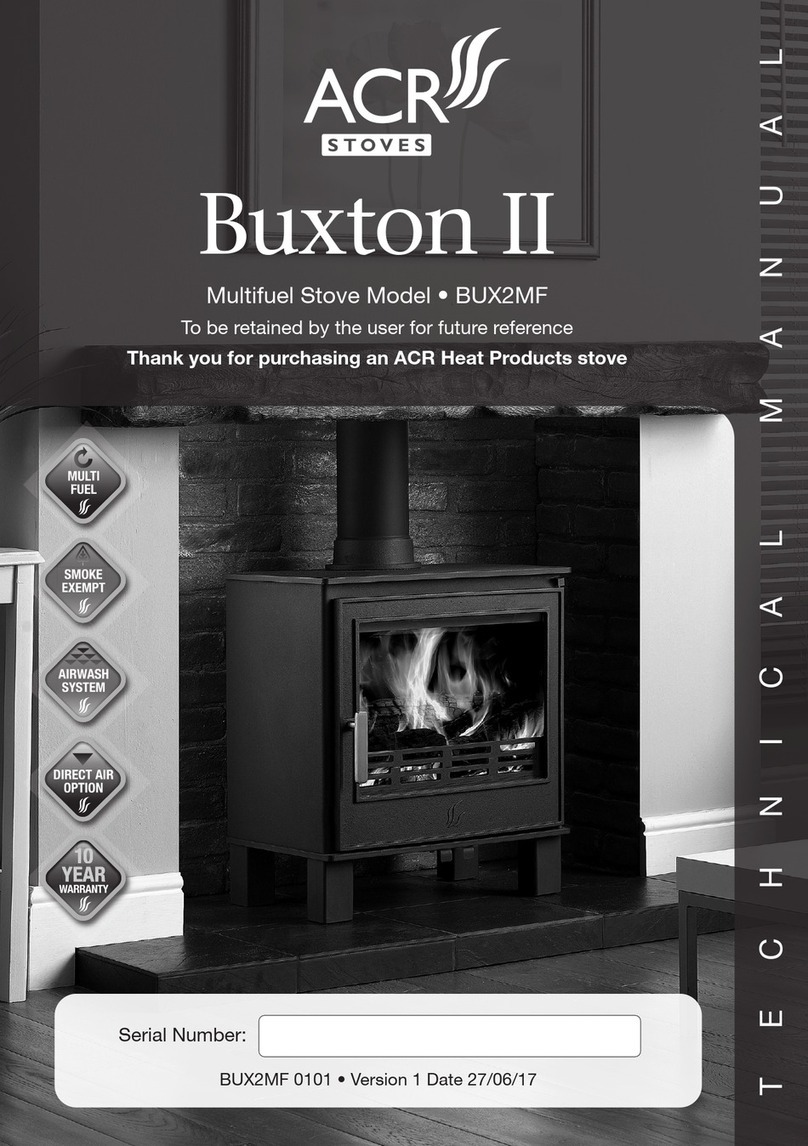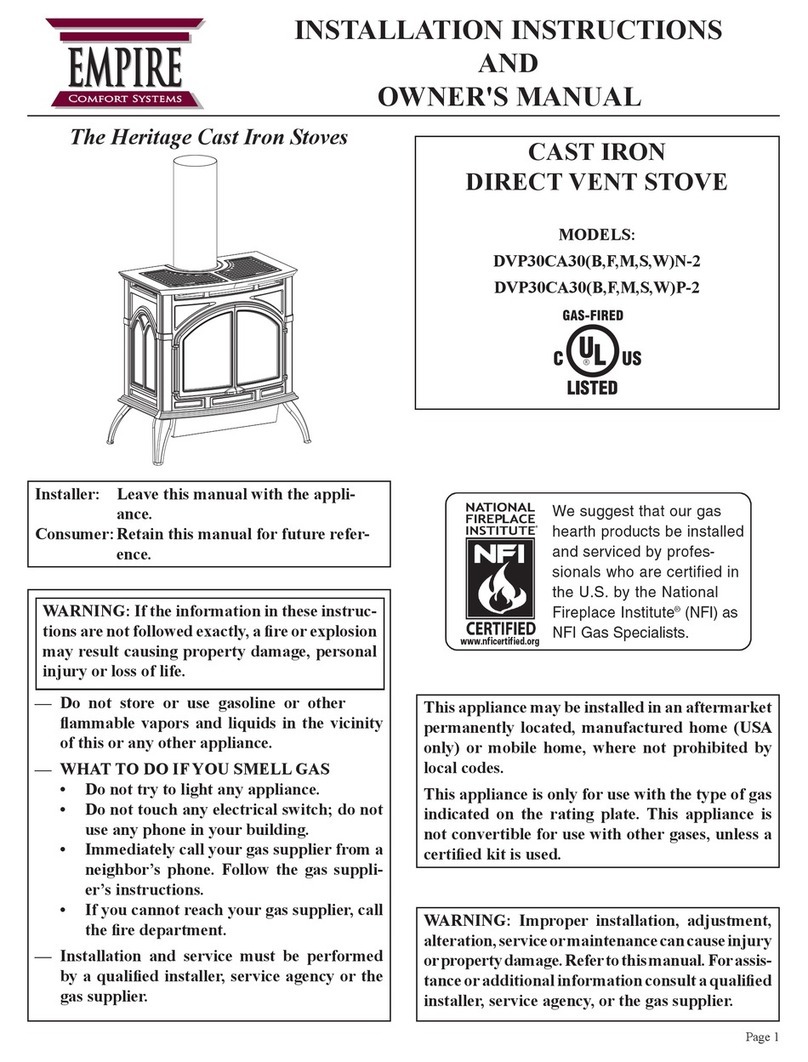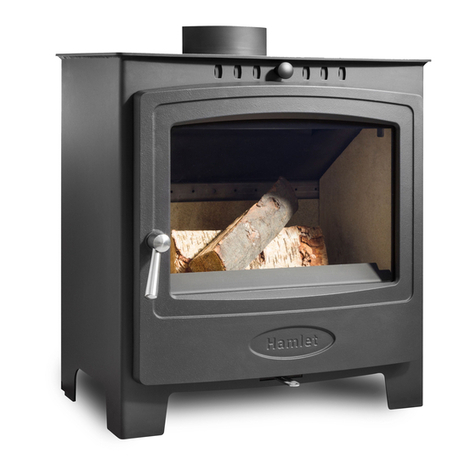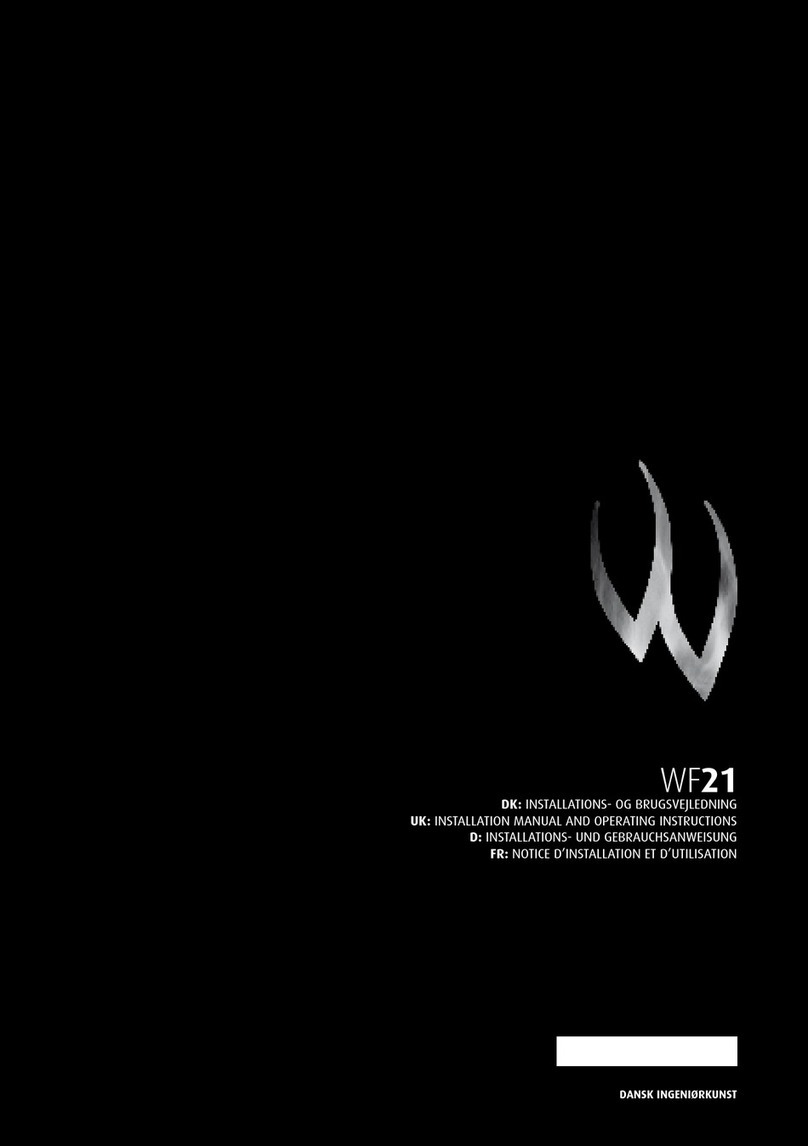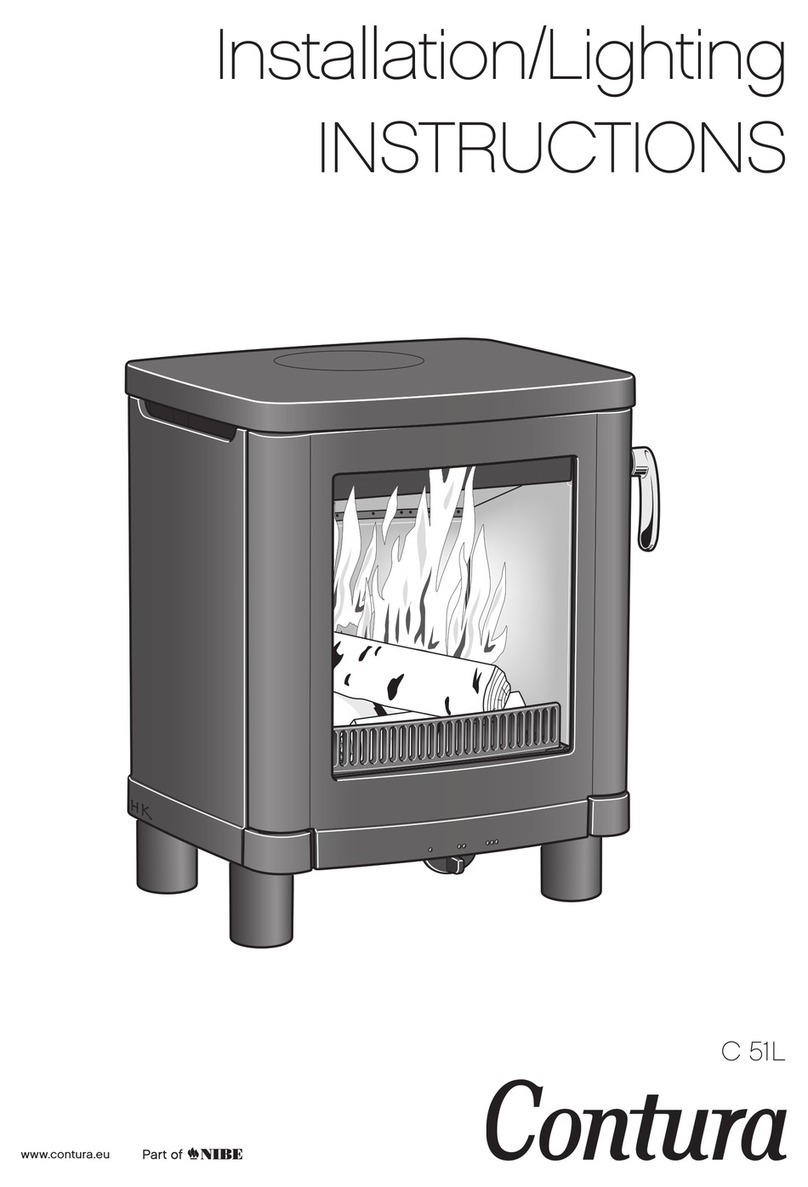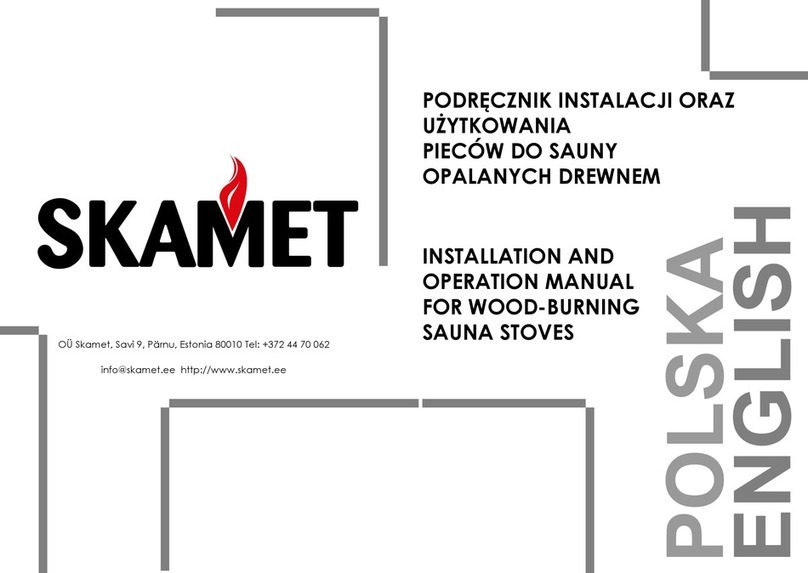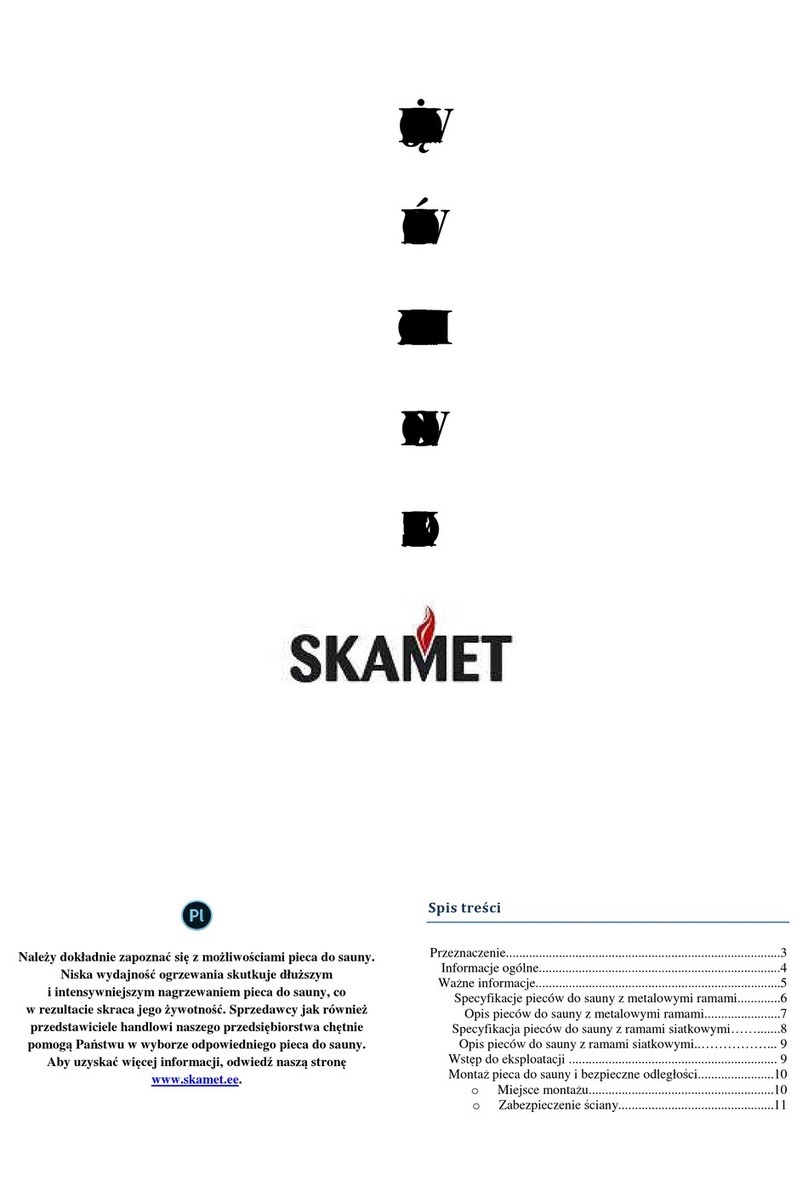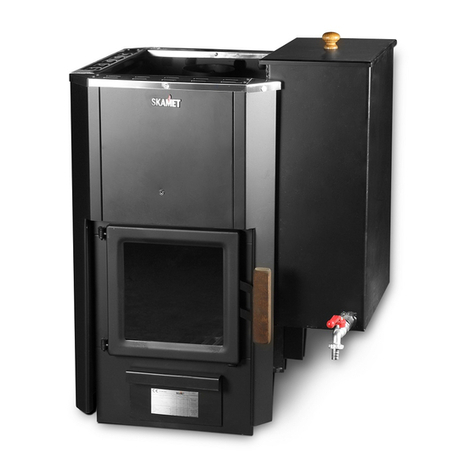8
Protection of walls
When wooden walls (wooden boards, planks, logs, etc.) are closer to the stove than al-
lowed according to safe distances, the walls have to be protected by installing required
materials (heat barrier). Single-layer heat barrier is made of at least 7-mm thick fibre-
reinforced non-flammable concrete plate or at least 1-mm thick metal plate.
There has to be an adequate number of fixing points to ensure the strength of the con-
struction. A single-layer heat barrier equals to at least 5.5-cm thick brick wall. The wall
has to be with open edges and at least 3 cm away from the protected surface reaching 60
cm beyond the total area of the sauna stove and be at safe distance from the side walls
(at least 50 cm).
Protection of floors
If a sauna stove is installed on a floor made of flammable material (wood, plastic or other),
at least a 4-cm thick concrete base has to be made on the floor to protect it from heat. For
example, the used material may be Slica 250 KM. The base has to reach beyond the stove
on sides at least 20 cm and at least 30 cm in front. The base plate should be installed a
little bit higher of the floor to keep the wooden floor dry. Detailed fire precautions are de-
livered by the local fire service official, who also coordinates the installation of the sauna
stove.
Connecting the sauna stove in the laid flue
The area of the cross-section of the chimney flue must not be smaller than area of the
cross-section of the stove flue.
There is a smoke vent on the stove. The opening required for connecting the flue is meas-
ured on the base of the chimney and is made a litter bigger than the flue pipe. Finally the
flue pipe connected to the base of the chimney is sealed with fire-proof with rock wool.
Appropriate sealing gap around the pipe is about 1 cm.
The inner corners of the flue opening have to be rounded to ensure free entrance of smoke.
The flue connection pipe must not be pushed too deep into the flue. If necessary, the smoke
pipe has to be made shorter.
First fix the flue connecting pipe in the smoke vent of the sauna stove. After that the tight-
ness and strength of the connection has to be checked. The stove is placed in the flue
opening and is pushed in the direction of the flue. The connecting pipe has to be wrapped
in fire-proof rock wool and be pushed into place in the stove. It may be necessary to add
fire-proof rock wool when checking the tightness of the sealing of the flue connection. If
the sealing wool is deep in the base of the chimney (deeper than 1 cm), the wool may be
covered with a layer of plaster or a decorative bar of the smoke pipe. Using a damper in the
connection of the sauna stove with the chimney is not compulsory.
Maintenance of the sauna stove
The manufacturer expects that the sauna stove is maintained by a competent special-
ist. The soot deposited on the smoke channels of the sauna stove are removed via round
maintenance trap doors located on the sides of the stone sockets. The smoke outlet and
the flue have to be cleaned regularly. The device has to be checked also when it has not
been used for a longer period.
Stones may crumble when used and that is why they have to be piled again at least once
a year (more often if used intensively). Stone rubble that has gathered in the lower part of
the stove has to be removed and broken bricks replaced. The flue has to be cleaned regu-
larly to ensure proper ventilation.
The ash compartment has to be cleaned before every use to ensure air access from the
ash compartment through the grate. A metal container should be used for removing the
ash. The user of the sauna stove needs at least 1 m2 of space in front of the stove.
Do not keep the ash container near flammable materials as the removed ash may con-
tain smouldering firebrands.














